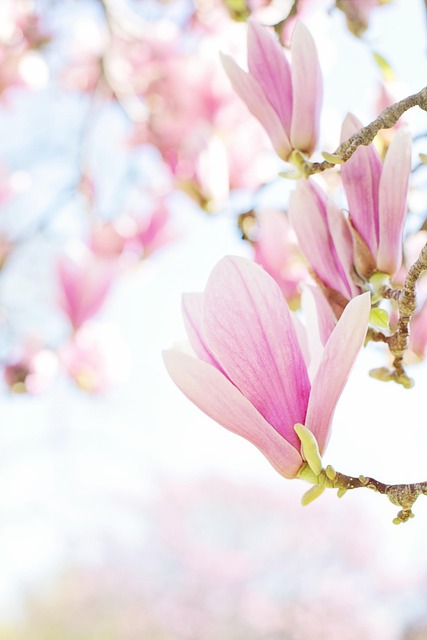Deadheading, removing spent blooms, is crucial for year-round indoor plant care. This practice stimulates new growth and promotes continuous blooming. Regular pruning maintains plants' health, shape, and air circulation, reducing pest risks. By identifying plant types and deadheading correctly, you can foster vibrant, flourishing greenery year-round. Adjust water, humidity, and light based on seasons to maintain optimal plant health.
“Maximize your indoor garden’s potential with the art of deadheading and spending bloom removal. This essential practice encourages continuous flowering, ensuring your space remains vibrant and lush throughout the year. Our guide delves into the benefits and techniques of regular pruning, offering a step-by-step approach to effective deadheading. Discover how to create a year-round indoor plant care routine that fosters healthy, blooming plants, enhancing your living environment.”
Understanding Deadheading: Removing Spent Blooms
Deadheading is a gardening practice that involves removing spent or wilted blooms from your plants, which can encourage continuous flowering and maintain a plant’s overall health. It’s an essential technique for year-round indoor plant care, ensuring that your greenery stays vibrant and visually appealing. By snipping away at the stem just below the faded flower, you stimulate new growth and promote the production of fresh, vibrant blooms.
This simple act of maintenance can significantly impact a plant’s ability to thrive, especially in controlled indoor environments where natural cues for blooming might be limited. Regular deadheading keeps plants looking their best and encourages a more robust display of foliage and flowers throughout every season. It’s a quick and effective way to refresh your indoor garden and keep it in top condition.
Benefits of Regular Pruning for Continuous Bloom
Regular pruning and removal of spent blooms are essential practices for achieving year-round indoor plant care and continuous flowering. By removing dead or wilting flowers, you encourage plants to produce new growth and stimulate additional blooming. This simple yet effective technique promotes a lush, vibrant display, ensuring your indoor garden stays visually appealing throughout the seasons.
Moreover, pruning helps maintain the plant’s natural shape and size, preventing leggy or unkempt appearances. It also increases air circulation within the plant’s foliage, reducing the risk of pest and disease issues. Incorporating this practice into your routine fosters healthier plants and contributes to longer-lasting indoor plant care, allowing you to enjoy a seemingly endless supply of color and life in your living space.
Techniques for Effective Deadheading
Maintaining year-round indoor plant care requires a simple yet effective technique known as deadheading, which involves removing spent blooms to encourage continuous flowering. Start by identifying the type of plant and its specific needs; some plants may require more frequent deadheading than others. Using clean, sharp scissors or pruning shears, carefully cut away the faded flowers at their base, just above a leaf node or bud. This process promotes new growth and prevents the plant from putting energy into seed production, instead focusing on producing more vibrant blooms.
Regular deadheading not only keeps your indoor plants looking their best but also prolongs their overall lifespan. It’s particularly beneficial for blooming plants like roses, petunias, and orchids. To make the process easier, keep a close eye on your plants and remove deadheads as soon as they appear. By incorporating this simple practice into your routine for year-round indoor plant care, you’ll be rewarded with lush, flourishing greenery that continues to delight throughout the seasons.
Creating a Year-Round Indoor Garden Routine
Creating a year-round indoor garden routine involves understanding the specific needs of your plants at different times of the year. In general, houseplants thrive on consistent care, including regular watering, fertilization, and repotting when necessary. However, as seasons change, so do their requirements. During spring and summer, most indoor plants are in their active growth phase, requiring more frequent watering and higher humidity levels. This is also the best time to fertilize them to support robust foliage and flower production.
In contrast, autumn and winter call for a more temperate approach. Many plants will enter a rest period during these months, needing less water and no fertilizer. Instead, focus on maintaining proper light exposure and ensuring they’re not subjected to drafty areas. Regularly removing spent blooms, known as deadheading, encourages continuous flowering throughout the year. This simple practice can significantly enhance your indoor garden’s aesthetic appeal while promoting healthy plant growth.
Regular deadheading and the removal of spent blooms are essential practices for promoting continuous flowering in both outdoor and indoor gardens. By understanding the benefits of this simple yet effective technique, you can create a vibrant, thriving space that blooms throughout the year. Incorporating these practices into your routine year-round indoor plant care regimen will result in healthier, more beautiful plants and a home filled with color and life.
